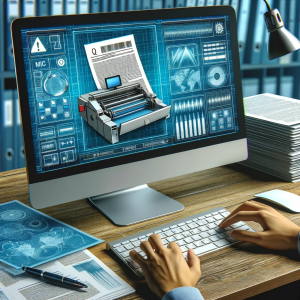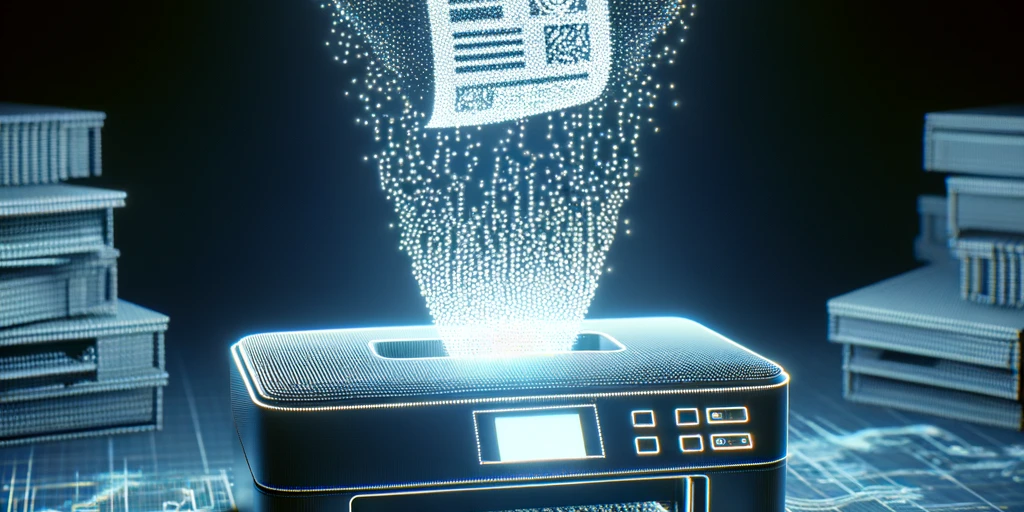In the silent symphony of printing, a hidden agent lurks: the Machine Identification Code (MIC). This digital fingerprint, woven into countless laser and inkjet prints, sparks heated debates about privacy intrusion. Is this “Big Brother” in your printer a phantom of paranoia, or a chilling reality?
Unearthing the Past: The MIC’s Genesis
The MIC’s story unfolds in the late 1980s, born as a shield against rampant currency forgery. In the era of dot matrix printers, these codes danced in the microscopic choreography of dots. As technology evolved, the MIC morphed, infiltrating color printers with subtler tactics like fluctuating toner density and whisper-soft color shifts. Invisible to the human eye, they sing their secrets only to specialized software.
Demystifying the MIC: A Technical Peek
Imagine a secret dot matrix, each element meticulously adjusted in size and position, discreetly etching an identifier into every printed page. The MIC operates by manipulating the printing process, like a skilled puppeteer. Toner distribution, laser intensity, and even the intricate patterns of halftone dots become its instruments, composing a hidden code. This code, when extracted, reveals the printer’s unique fingerprint, its potential location, and even the exact time of the print job, transforming a seemingly private document into a traceable whisper.
Navigating the Legal Labyrinth: MICs and Privacy
The legal landscape surrounding the MIC is a murky terrain. While no specific laws directly address it, broader data privacy regulations like the GDPR and CCPA grant individuals control over their data. This raises crucial questions: Does the MIC data fall under these regulations? Should users have the right to silence this hidden tracking? The debate continues, demanding increased transparency and ethical responsibility from printer manufacturers.
Confronting the Privacy Paradox: Solutions and Innovations
In response to these concerns, a chorus of solutions rises. Privacy-focused printers, devoid of MICs or offering granular control over their activation, are gaining momentum. Software tools, like digital chameleons, can anonymize documents by cloaking the MIC’s whispers. But these are merely the opening notes in a symphony of change. Public awareness, open dialogue among stakeholders, and relentless technological advancements are vital to ensure that printing remains a free and secure form of expression in the digital age.
Reclaiming Your Printing Privacy: Empowerment and Advocacy
The existence of MICs serves as a stark reminder of technology’s double-edged sword, but it also ignites a call to action. By understanding the MIC’s history, technical intricacies, and legal implications, we become empowered to seek solutions. We can demand transparency from manufacturers, champion privacy-focused innovations, and advocate for stronger data protection laws. Ultimately, the power to reclaim our printing privacy lies not just in the technology we choose, but in the collective voice we raise for change.

The Search for Hidden Messages in Print.
How it Works: The Invisible Code
The Machine Identification Code (MIC) may seem like a technological ghost, but its operation is surprisingly straightforward. Here’s a step-by-step breakdown:
- Code Creation:
- Manufacturers embed a unique identifier within the printer’s firmware. This code can include details like serial number, model, and even location information.
- Some MICs utilize a simple counter, incrementing with each print job.
- Data Encoding:
- The printer manipulates the printing process to subtly encode the MIC within the printed page. This can be done through several methods:
- Toner Density: Varying the amount of toner deposited on specific areas creates slight differences in shades, encoding the code.
- Laser Intensity: Adjusting the intensity of the laser beam affects dot size and spacing, carrying the hidden data.
- Halftone Pattern Modulation: Modifying the intricate patterns of dots used for shading hides the code within the overall image.
- Code Embedding:
- These subtle variations are woven into the printed text, images, or even blank areas of the page.
- The changes are imperceptible to the naked eye, making the code invisible.

Digital Detective: Extracting the MIC.
- Data Extraction:
- Specialized software can analyze the printed page, identifying and decoding the embedded MIC.
- Tools like the EFF’s Yellow Dots and Deda from TU Dresden use algorithms to detect the tiny variations in dots, toner density, or halftone patterns.
- Data Interpretation:
- Once extracted, the MIC reveals information about the printer, including:
- Serial number
- Model and brand
- Approximate location (based on manufacturer databases)
- Time and date of printing (in some cases)
This entire process happens in the blink of an eye, leaving behind an invisible trail that can potentially link printed documents back to specific printers and individuals.
- Electronic Frontier Foundation (EFF): Yellow Dots Project: This research project investigated the MIC technology and developed software to detect and analyze the hidden code. You can find their resources here: https://www.eff.org/deeplinks/2008/10/effs-yellow-dots-mystery-instructables
- Technische Universität Dresden (TUD): Deda Project: This project developed a tool to anonymize printed documents by removing or altering the embedded MIC. Their research paper and software are available here: https://github.com/DivanteLtd/anonymizer






